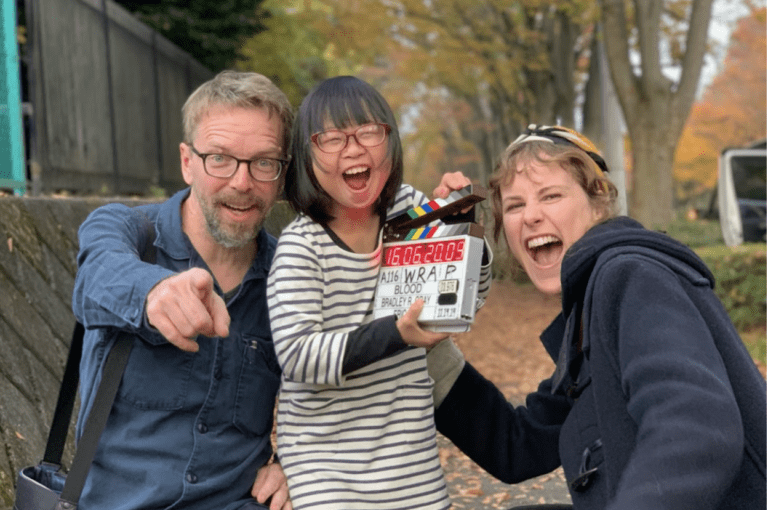Recently, Bradley Rust Gray’s film “blood” premiered at the Sundance 2022 Film Festival. You can read Chinosity’s review here.
Gray previously directed films such as “Salt” and “The Exploding Girl,” which also explored romances in unexpected situations.
In an interview with Chinosity, Gray discussed his thought process behind the two lead characters, his inspirations behind the film’s elements, and what future he envisions for his characters after the cameras stop rolling.
“blood” won the U.S. Dramatic Special Jury Award: Uncompromising Artistic Vision award at Sundance. This interview is bound to have some key nuggets of insight!
In a NYT interview piece in 2009, you mentioned that Hou Hsiao-Hsien is a major influence to you. In what way do you think Hou influenced you and the movie “blood”?
Hou Hsiao-Hsien [HHH] has been a major influence on all of my work ever since I saw Café Lumiere. On my last film with cinematographer, Eric Lin, (sic) we tried to learn from HHH by studying his approach and where possible we tried to recreate it, finding similar locations and using his calm and deliberate camera movements.
Occasionally, action in his films also takes place outside of the frame and like Ozu these moments take place in real time. I like the idea of setting a situation where I’m not sure of the movement of the actors. Then we film in Hou’s style, with the camera hidden from a distance, and follow the action in a calm and controlled manner.
I believe his camera work creates a compelling energy where the filmmaking becomes an omniscient narrator to the chaos life brings us.
What’s the inspiration behind your characters? Why did you choose to focus on an Icelandic-Japanese relationship?
Originally, I began working on the film with another actress who was a friend of mine. My parents died when I was a child and her partner had died a couple years before we met. We shared this grief and eventually her journey became the framework for the story.
Chloe’s character was also [influenced] by friends of mine who are photographers. Rinko Kawauchi was another influence. I was fortunate to meet her when we were scouting for the film.
My wife and I lived in Tokyo and Reykjavík in the years 2000-2003. While in Japan we met a choreographer named Chieko Ito, and we decided that we’d like to work together someday but we didn’t know what it would be. When I began this script, I contacted Chieko and told her I thought I had a framework for an idea. We met and developed her character together as well as the dance routine she would use.
I had written the character for Toshi before I met Ueno Takashi. I met with several Japanese actors, but none were the right fit. Then a Japanese friend of mine who had read the script sent me a YouTube video of Ueno playing music.
His personality fit the character well, and we backwards-adapted the film to fit his real personality more than my original character. He brought so much life to the character by also allowing us to film in his house and to use his friends in the film.
The grandmother character was influenced [by my] wife’s grandmother. She was a Korean born farmer and used to sit and talk with me in Korean. We never spoke the same language, but I was very fond of her, and I appreciated that she never let our language barrier slow her down from constantly talking to me.
When it was time to shoot the dream section of the film, Iceland was one of the few places in the world we could film without masks. Because we had so many friends there, it made sense to shoot in Iceland and use the idea that Chloe and Peter [Chloe’s husband] lived there and had the same friends my wife and I have.
[zombify_post]


0 Comments